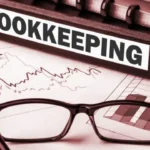Terminology to know
A trade is made when a bid (buy order) meets an ask (sell order), at which point the price is set for one unit of currency pair. The profit on a trade is the difference between the cost of the currency (the price at which you bought it) and the selling price (the price at which you sold the currency).
The profit on a trade is called P&L, or “percentage and dollar,” meaning how much of a percentage of your money a particular trade won and how many dollars that equates to. Paired with expert advice, the modern forex platform enables traders to seamlessly view global financial markets and make trades with just a few clicks.
What are the main risks of trading CFDs?
As with all investments, trading CFDs carries risks. Trading CFDs is a leveraged product and can result in losses that exceed the initial investment. In addition, the price of a contract for differences may change considerably between the time you open it and close it.
This means you could lose your original investment or be required to make payments beyond your initial outlay. CFDs are not suitable for everyone; please make sure you understand the risks involved. The Financial Conduct Authority (FCA) is the UK’s financial regulator, and they provide more information on their website about CFDs here.
As with all investments, trading CFDs carries risks. Trading CFDs is a leveraged product and can result in losses that exceed the initial investment. In addition, the price of a contract for differences may change considerably between the time you open it and close it.
What are the risks of trading CFDs on margins?
Leveraged products, such as CFDs allow investors to trade larger amounts than their initial investment. Margins attract interest and can increase losses/gains. Therefore, you may need a higher level of capital to start trading in CFDs than other types of investments.
You should not trade CFDs unless you have sufficient funds available to meet your financial obligations at all times, including – failing to cover losses on open positions and having insufficient capital in the event of adverse price movements. In addition, please remember that even if you do not lose money initially when trading on a leveraged or non-leveraged product, you could lose money due to interest charges if you leave your position open for longer than necessary.
The price of a CFD can fluctuate in line with any increases or decreases in the underlying bond, commodity, index, or share price. If market volatility is high and there are large changes over a short period, this may impact the price of your CFD position. Therefore, you should monitor any open positions closely and consider how this may affect your risk exposure and level of capital at all times, including if there is a wider market move against your work.
We recommend you trade on markets.com – a safe and secure platform!









